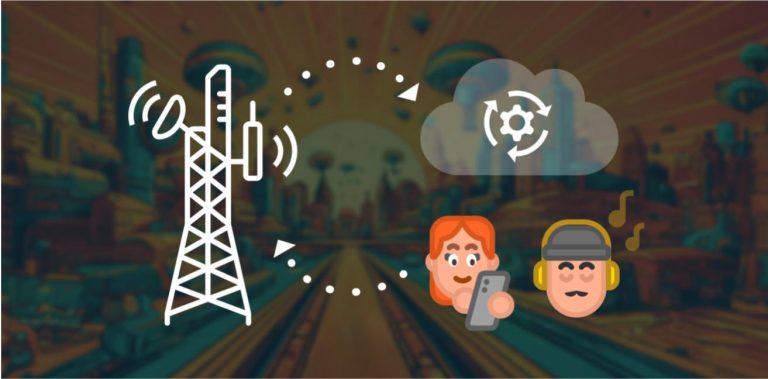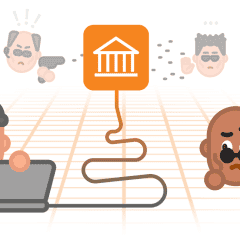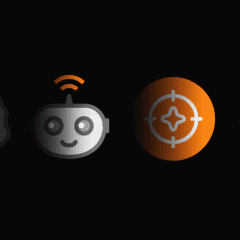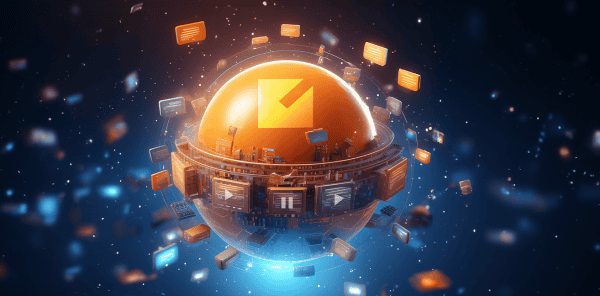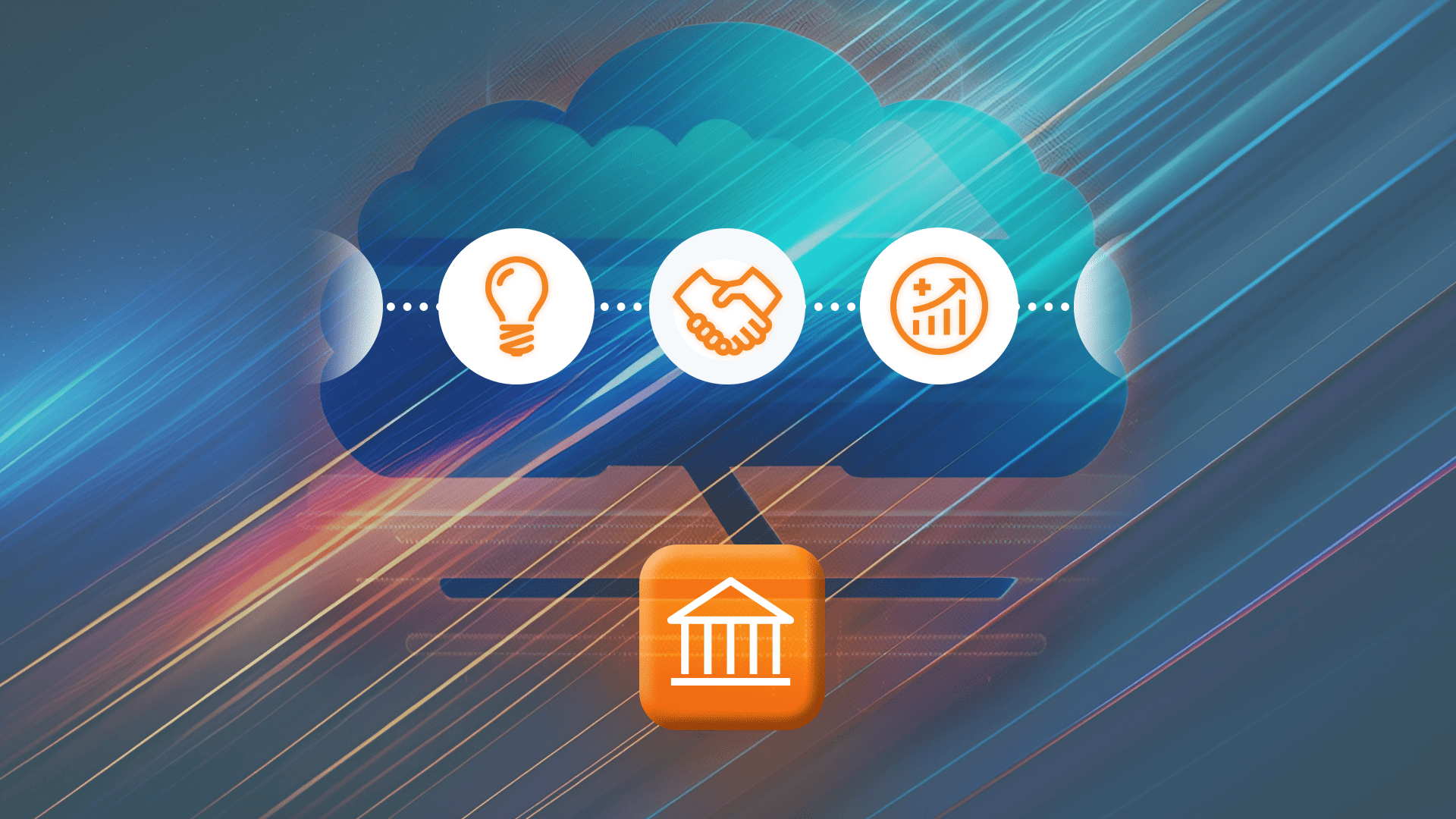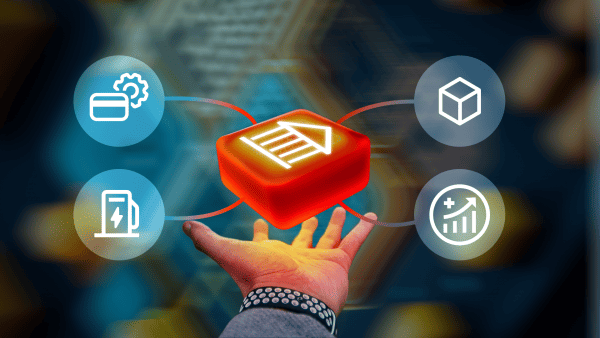With the recent growth of IoT in telecommunications, the sector is (fast!) on the way to becoming a cornerstone of the telecom industry. According to estimates, the number of IoT devices in the world is expected to reach 75.44 billion by 2025 – that’s well more than double the figure from 2020. Why the explosive growth? A lot of it can be boiled down to two letters (or, at least, a letter and a digit): the rollout of our new friend 5G.
Yes, there have been other advancements in network technologies, like Starlink, but 5G in particular offers the speed, capacity, power efficiency, and low latency needed to support this vast and growing number of connected devices. And the nexus of 5G and IoT is putting telecommunications companies at the forefront as they integrate and leverage IoT to enhance their service portfolios and improve customer experiences.
Smart cities, smart transportation, unmanned vehicles, drones. Connected healthcare. Industrial automation. Enhanced agriculture! IoT is reshaping all of our economic landscapes. So, it’s high time we took a close look its the real-world applications in telecom, the impact of 5G, and, generally, the future of IoT in telecommunications. Along the way, we’ll even dig into the nuts and bolts of managing and configuring IoT networks. So if you’re ready, let’s get started.
What Is IoT in Telecommunications?
In brief, IoT requires telecommunication networks to enable enhanced communication, monitoring, and management of connected devices.
But first, let’s back up for a second and explain the definition of IoT, or the Internet of Things. In short, it’s things (refrigerators, freight trucks, water sprinklers…) being enabled to send information back and forth via the internet with the help of sensors, often connected with SIM cards just like the one in your mobile phone. Your smartwatch, that location tracker in your luggage, and the ability to fire up your apartment A/C unit from work so that it reaches the perfect temperature just before you get home is all IoT. And on the industrial level, IoT sensors can now be found in everything from factory equipment to irrigation systems.
So, the role of telecommunications in IoT is to provide the networks that actually enable all the “things” in the Internet of Things to communicate with each other. And by combining IoT devices with the speed of 5G, telecom operators can accelerate that network performance, setting the stage for the rapid advancement of IoT into robotics, security, health care and any other sector that needs real-time response.
How Is IoT Changing the Telecom Industry?
According to a report by McKinsey, the economic impact of IoT could reach up to $11.1 trillion per year by 2025. And the telecommunications industry is playing a critical role in that growth.
Yes, the telecom industry is facing a huge cost to build the necessary 5G networks. But that investment is enabling telecoms to create new, IoT-specific solutions. For example, take Verizon’s ThingSpace, which enables businesses to manage IoT devices and applications more efficiently. They’re also leveraging technologies to help IoT innovators get their ideas to market quickly – such as those developed by our own partner, IoT Mill.
Some Foundational Technologies Behind IoT in Telecommunications
Another key impact of IoT in telecommunications is that the industry is driving the creation of new technologies and devices to support these innovations and services. To list some examples, a few key ones include:
- Sensors: These are the physical objects that collect data from the environment. For example, there are smart meters, industrial robots, and those wearable health monitors we just talked about.
- Connectivity: IoT devices require reliable and ubiquitous connectivity to transmit data. Telecommunication networks, including cellular (4G, 5G), Wi-Fi, and Low Power Wide Area Networks (LPWAN) – critical tech for rural areas – provide the necessary infrastructure for seamless communication between devices.
- Data Processing and Analytics: The data collected by IoT devices is transmitted to centralized or edge computing platforms, where it’s processed and analyzed. Advanced analytics, including machine learning and artificial intelligence, are applied to derive insights and enable real-time decision-making.
- IoT Platforms: Telecoms can facilitate the management of IoT systems by providing tools for device provisioning, data collection, analytics, and integration with other systems. Examples include Microsoft Azure, IBM Watson IoT, and AWS IoT Core.
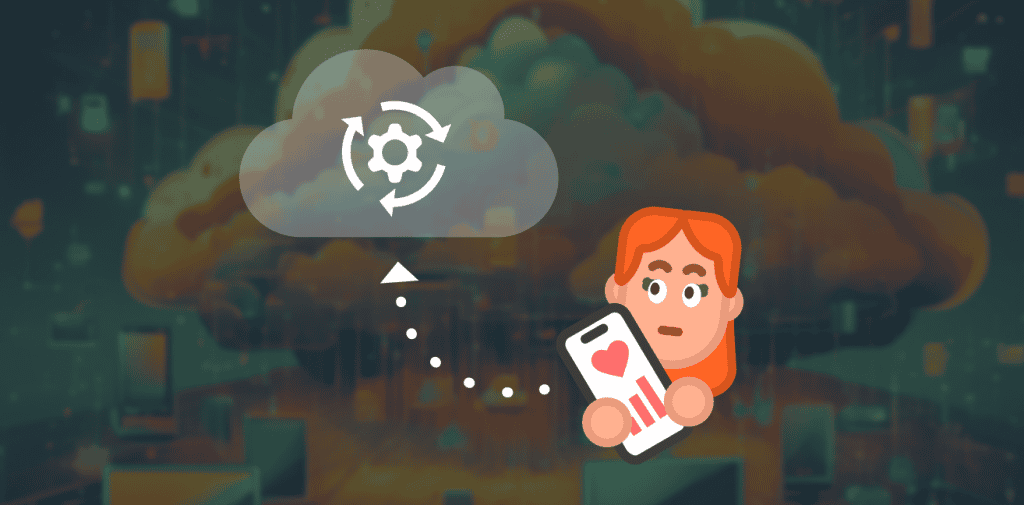
What Are the Real Opportunities in 5G-Enabled IoT?
Certainly, 5G technology has an enormous edge over 4G. You can dive into the details of the workings of 5G and why it is an improvement over 4G in our past blog post, but in short, it’s delivering much faster transmission data rates, and extremely low latency (or lag), which is crucial for any technologies that need fast response times. Those two advantages in particular are powerful enablers for advanced IoT applications. So, here are a few areas where you can expect to see rapid growth in the near future – all thanks to the arrival of 5G.
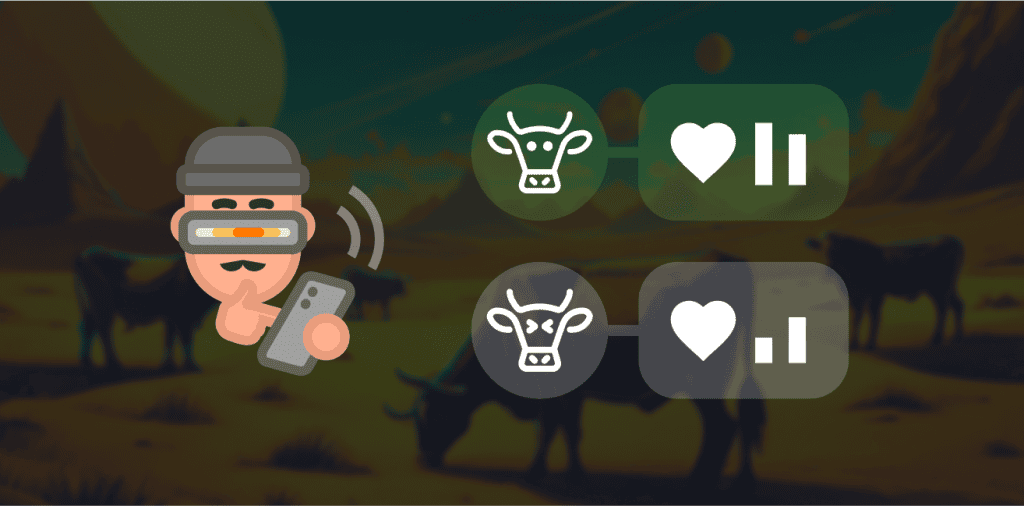
Autonomous Vehicles
5G enables real-time communication between vehicles and infrastructure, facilitating the development of autonomous driving systems. IoT sensors and 5G connectivity allow vehicles to communicate not just with each other and with a central command center, but also with their immediate surroundings. That’s what will (eventually!) make self-driving cars safe and viable on a wide scale. Look at BMW for a good example of connected car technology development.
Smart Healthcare
5G and IoT are revolutionizing healthcare by enabling remote patient monitoring, telemedicine, and connected medical devices. 5G-enabled wearable devices can monitor patient vitals and transmit data to healthcare providers in real-time, improving patient outcomes and reducing healthcare costs. For example, Philips uses 5G to support telehealth service and connected medical devices, enhancing patient care and accessibility.
Industrial Automation
In manufacturing, 5G and IoT enable advanced industrial automation. IoT sensors monitor machinery and production lines, while 5G ensures real-time data transmission and control. This leads to increased production efficiency, reduced downtime, and enhanced safety. Companies like Siemens are leveraging 5G to create smart factories with fully automated production processes.
Smart Agriculture
There are so many 5G-enabled IoT solutions in agriculture. For instance, there’s precision farming, automated irrigation, and livestock monitoring. IoT sensors can collect data on soil moisture, weather conditions, and crop health, while 5G ensures the rapid transfer and analysis of that data. As a result, farmers can acheive higher crop yields, optimized resource usage, and improved sustainability. (More food with less resources, in other words.) A good example of advancement in this area is John Deere. That company uses 5G to enhance its precision agriculture technologies, providing farmers with real-time insights to improve crop management.
Augmented and Virtual Reality (AR/VR)
5G and IoT enable immersive AR and VR experiences by providing the high-speed, low-latency connectivity required for real-time interactions. To illustrate, applications include remote training, virtual tourism, and interactive gaming. The enhanced user experiences and new business models created by AR/VR technologies are transforming various industries. As one example, Qualcomm is at the forefront of integrating 5G with AR/VR to create innovative solutions.
Machine Learning
The combination of IoT data with AI and machine learning is enabling predictive analytics, automated decision-making, and enhanced operational efficiency. So, companies are leveraging AI to optimize network performance, enhance customer experiences, and develop new services. MIT is using machine learning to predict hospital outcomes and retailers like the North Face are using it to create automated personal shopping consultants.
Real-World Applications of 5G and IoT in Telecommunications
So that’s how telecoms are helping other industries innovate in IoT. But what are telecoms doing themselves in this area? In brief, with 5G, telecoms are perfectly positioned to level up the IoT universe with low latency, enhanced speed and bandwidth, and the ability to connect up to one million devices per square kilometer. Here are a few specific examples of how telecoms are putting that epic handshake to work. (Naturally, we’ll kick it off with an example in which we’re directly involved.)
PortaOne and Datora Group: Driving Digital Transformation for IoT in Telecommunications
Our collaboration with Brazil-based Datora Group is an excellent model for the use of IoT in telecommunications. Datora Group leveraged our IoT solutions to become a multi-channel M2M (machine-to-machine) communication powerhouse. In fact, it puts the power in powerhouse: at last count, the company is serving 3 million IoT devices, including automobiles, boats, security sensors, and inventory trackers.
Key Highlights of Datora Group’s 5G IoT Initiatives:
- Expansion of Services: Initially focused on voice services under the Vodafone brand, Datora expanded into mobile and M2M services with support from PortaOne. This included the re-use of existing infrastructure and licenses to support the new mobile business.
- IoT Cloud Transformation: Datora created Arqia, a mobile technology unit, to supply SIM cards for IoT initiatives and help companies expand into mobile services. This transformation required a robust cloud infrastructure capable of handling massive transaction volumes.
- Massive Connectivity: Arqia achieved significant scalability, with those 3 million active SIM cards generating 2000 transaction records (xDRs) per second. That totals 2 billion (!) xDRs processed monthly. This volume was managed using Oracle’s Cloud Infrastructure (OCI) and PortaBilling.
- Innovative Applications: For example, the use of IoT sensors to monitor cattle health in Brazil. Tiny sensors track changes in the bloodstream of cattle, enabling farmers to monitor the health of their herds remotely. This application reduced livestock mortality from birthing complications by up to 80%.
Verizon’s Smart Communities Solutions: Driving Innovation for IoT in Telecommunications
Verizon has been a leading pioneer in deploying IoT solutions for smart cities. Their initiatives are demonstrating the potential of IoT to absolutely transform urban infrastructure and services.
Key Highlights of Verizon’s Smart Cities Projects:
- Smart Lighting: Verizon’s smart lighting solutions use IoT sensors to monitor and control streetlights. These lights can adjust brightness based on ambient light conditions and pedestrian presence, reducing energy consumption by up to 50%. Additionally, they can report maintenance issues in real-time, improving service reliability.
- Traffic Management: Verizon has implemented IoT-enabled traffic management systems in several cities. These systems use sensors to monitor traffic flow and congestion, allowing for dynamic traffic signal adjustments. This has decreased idling and reduced travel time by up to 20%.
- Public Safety: Verizon’s IoT solutions include connected cameras and environmental sensors for public safety. These devices provide real-time surveillance and can detect anomalies such as gunshots or chemical spills. That’s enabling quicker responses from emergency services.
AT&T’s Fleet Management Solutions: IoT Driving Efficiency
AT&T has leveraged IoT technology to provide comprehensive fleet management solutions, helping businesses optimize their logistics and reduce operational costs.
Key Highlights of AT&T’s Fleet Management IoT Solutions:
- Vehicle Tracking: AT&T’s fleet management solutions use GPS and IoT sensors to provide real-time tracking of vehicles. This allows fleet managers to monitor vehicle locations, optimize routes, and improve delivery times. Businesses have reported up to a 15% increase in fleet efficiency.
- Maintenance Alerts: IoT sensors monitor vehicle health and performance, and they send maintenance alerts to fleet managers when issues are detected. This predictive maintenance approach has reduced vehicle downtime and maintenance costs by up to 30%.
- Driver Behavior Monitoring: Think: speeding, harsh braking, idling… By analyzing this type of data, companies can implement training programs to improve driver safety and fuel efficiency. The result? Fewer accidents, fewer complaints, and better fuel consumption.
Diving into the Configuration and Management of IoT Networks
This is a blog, not a technical manual, so we’ll try to keep our discussion of IoT network configuration quick and easy. Configuring and managing the necessary networks for IoT in telecommunications requires several critical steps and considerations to ensure efficient operation and security. Here they are in (very) brief.
Network Setup
Setting up the IoT network involves selecting the appropriate connectivity options (e.g., cellular, Wi-Fi, that LPWAN we talked about earlier) and configuring network protocols. Telecom operators must ensure that the network infrastructure can support the scale and data requirements of IoT devices.
Device Management
This includes provisioning, monitoring, updating, and maintaining IoT devices to ensure optimal performance and security.
Data Management
You won’t be surprised to hear that IoT networks also generate vast amounts of data. And it all needs to be collected, stored, and analyzed. Telecom operators are implementing efficient data management solutions to handle all that data and derive actionable insights. Think: edge computing and cloud integration.
Security Management
We’re sure you’ve heard those prank stories of people hacking into home IoT devices and changing up the temperature in a room or talking through a baby monitor… Imagine something like that happening at a hospital. To keep systems safe from such cyber threats, telecom operators need to implement encryption, access control, and intrusion detection systems.
Scalability
IoT networks must be scalable to accommodate the growing number of connected devices. Telecom operators need to design their network infrastructure to support large-scale deployments and handle increased data traffic.
What Challenges Are Standing in the Way of the Expansion of IoT in Telecommunications?
It’s true: the road ahead for IoT in telecommunications isn’t completely clear of potholes. Indeed, like with any massive technological or cultural shift, there will always be a few challenges and risks. Let’s take a look at the biggest ones, and how telecoms can protect their path to growth.
Security Concerns
The increased connectivity of IoT devices introduces significant security vulnerabilities. So, ensuring robust encryption, authentication, and intrusion detection systems will be critical to protect against cyber threats.
Interoperability Issues
IoT devices from different manufacturers often use various communication protocols and standards. That, obviously, can lead to interoperability issues. But, just like API has opened the doorway to seamless low- and no-code integration across telecom and other business platforms, developing universal standards and frameworks can facilitate similar seamless integration and communication between diverse IoT devices.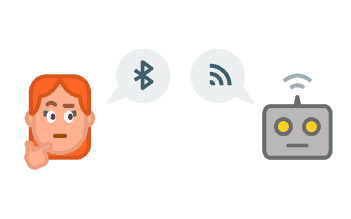
Scalability
Telecom operators must invest in scalable network solutions and leverage edge computing to handle the traffic from the massive number of IoT devices expected to connect to 5G networks.
Energy Consumption
Many IoT devices operate on battery power, and integrating them with 5G can lead to higher energy consumption. Naturally, this is a particular challenge in rural areas and in the agricultural industry. (Cows wearing sensors is one thing; cows wearing massive battery backpacks or solar panels is another.) Implementing energy-efficient communication technologies, such as Narrowband IoT (NB-IoT) and Low Power Wide Area Network (LPWAN), can help reduce energy usage.
What Are Some PortaOne Solutions for IoT in Telecommunications?
Of course, PortaOne has plenty of resources to help telecoms overcome these challenges and set themselves up for success in IoT. Our comprehensive solutions can facilitate the configuration and management of IoT networks, and help you reach the growing market of IoT innovators out there who need your connectivity – and more. Here are just a few platforms and tools to consider.
- PortaBilling: PortaBilling supports IoT and M2M billing and charging functionalities, enabling telecom operators to manage massive transaction volumes. (Remember that 3 million SIM card project launched by Datora Group? They’re still growing.) It’s also a flexible, API-based billing solution (like, really flexible!) that can support shared group plans, dynamic bandwidth allocation, robust security features, and a wide range of applications.
- IoT Mill: IoT Mill is a complete rapid IoT deployment kit designed to simplify the process of launching IoT services. It includes pre-assembled devices with a wide range of sensors, wireless connectivity options, and customizable capabilities. IoT Mill ensures quick results with unmatched convenience, allowing IoT innovators to launch their ideas in hours, not months. Then, they can use real customer feedback (and revenue) to support the iteration and perfection of their IoT projects.
- Edge Computing Integration: PortaOne solutions integrate edge computing to process data closer to the source, reducing latency and improving real-time decision-making. This is crucial for applications that require immediate responsiveness, such as industrial automation and smart city solutions.
It’s Time to Bring Your Ideas into the World of IoT in Telecommunications
Are you ready to take advantage of these solutions and tap into the exciting nexus of 5G and IoT in telecommunications? Reach out to our team to learn more about how PortaOne can tailor a solution that is exactly right for you and your ideas. We have the tools and expertise to help set your telecom operation up for IoT success.
IoT in Telecommunications FAQs
IoT in telecommunications refers to the integration of IoT technologies with telecommunication networks to enhance connectivity, monitoring, and automation of connected devices.
5G significantly enhances IoT by providing faster data speeds, low latency, and massive connectivity, enabling real-time applications and the deployment of dense IoT networks.
Examples include smart cities, industrial IoT, connected healthcare, and precision agriculture, where IoT devices monitor and manage infrastructure, processes, and services.
The main benefits of IoT in telecommunications include improved operational efficiency, enhanced customer experience, cost savings, new revenue streams, and better network management.
Tools like PortaBilling and IoT Mill help manage IoT networks by providing billing, connectivity, device management, and data analytics functionalities.
The future of IoT in telecommunications includes the expansion of 5G networks, integration of edge computing, use of AI and machine learning, and increased focus on security measures.

